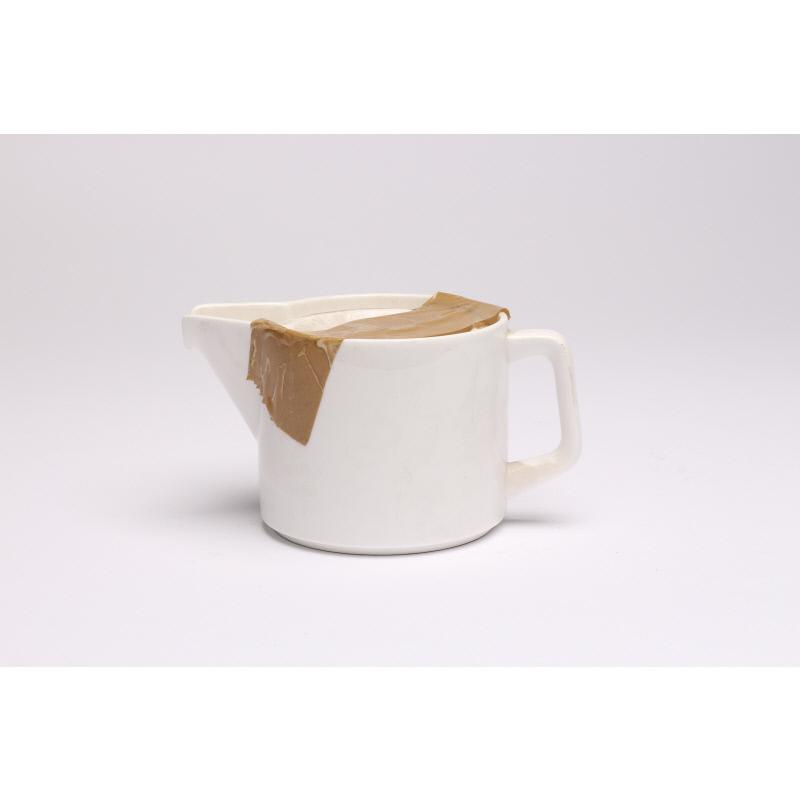Teapot
Classification(s):
Pottery
Date: c.1951-1976
Manufacturer: Wedgwood (English, founded 1759)
Medium: Bone china
Object number: P1124E
See Also
Place of Production:England
Title:Grosvenor White
DescriptionGlazed ‘Grosvenor White’ metallised bone china teapot by Wedgwood. The teapot has a sunken lid and angular spout. The teapot was manufactured in England at the Tuscan Works, Longton in 1967. The Tuscan Works was a manufacturing unit of the Wedgwood Group (previously known as R H & S L Plant Ltd.).
The teapot has brown parcel tape over the lid and upper body.
Makers mark to base “Tuscan Bone China, Made in England, 67, Metallised Wedgewood Group BS4034”. BS4034 is the British Standards Kite Mark for hotel ware.
A matching espresso cup, saucer and consommé cup are represented in the Collection. The individual pieces are designed to be stackable.
The teapot has brown parcel tape over the lid and upper body.
Makers mark to base “Tuscan Bone China, Made in England, 67, Metallised Wedgewood Group BS4034”. BS4034 is the British Standards Kite Mark for hotel ware.
A matching espresso cup, saucer and consommé cup are represented in the Collection. The individual pieces are designed to be stackable.
ProvenanceThe collection was instigated by the London Country Council (later the Greater London Council) and the Council of Industrial Design (COID). The collection’s original purpose was concerned with the teaching and dissemination of modern, ‘good design’.
The collection was established in 1951/52 as the ‘Experiment in Design Appreciation’, later renamed the ‘Circulating Design Scheme’.
The Circulating Design Scheme lent boxed showcases to London schools. The showcases contained handling objects, material samples and interpretation on a specific subject.
COID withdrew its involvement in the Scheme in 1957. After which time, it was managed exclusively by the London County Council from 1957-1963.
After the administrative restructuring of London authorities, the Scheme was jointly managed by the Greater London Council and the Inner London Education Authority (ILEA) from 1963 – 1976.
The Scheme was operational until 1976 when the collections were withdrawn from circulation. ILEA was abolished in the late 1980s and the collection was donated to Camberwell College of Arts.
ILEA was responsible for secondary and tertiary education in the inner London boroughs, this included Camberwell.
The collection was established in 1951/52 as the ‘Experiment in Design Appreciation’, later renamed the ‘Circulating Design Scheme’.
The Circulating Design Scheme lent boxed showcases to London schools. The showcases contained handling objects, material samples and interpretation on a specific subject.
COID withdrew its involvement in the Scheme in 1957. After which time, it was managed exclusively by the London County Council from 1957-1963.
After the administrative restructuring of London authorities, the Scheme was jointly managed by the Greater London Council and the Inner London Education Authority (ILEA) from 1963 – 1976.
The Scheme was operational until 1976 when the collections were withdrawn from circulation. ILEA was abolished in the late 1980s and the collection was donated to Camberwell College of Arts.
ILEA was responsible for secondary and tertiary education in the inner London boroughs, this included Camberwell.







